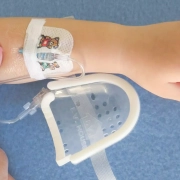Rheumatoid Arthritis medicines use during pregnancy linked to adverse outcomes in new study

In a groundbreaking investigation, researchers have
delved into the medication utilization patterns during pregnancy among women
grappling with rheumatoid arthritis (RA). The study concludes that appropriate medication adjustment is quite
necessary when planning for pregnancy among women with RA.
The study
results were published in the journal Rheumatic & Musculoskeletal Diseases.
Patients
diagnosed with rheumatoid arthritis (RA) often face challenges when it comes to
achieving favorable pregnancy outcomes, as compared to individuals in the
general population. This disparity underscores the need for careful
consideration and specialized management for female patients with RA who are
planning for pregnancy and lactation, as they encounter limited treatment
options.
By drawing on data from the Korean
national health insurance database spanning a decade from 2010 to 2020, sheds
light on critical factors influencing pregnancy outcomes for this vulnerable
population.
Led by a team of esteemed scientists, the study focused
on female patients aged 20 to 50 years diagnosed with RA. Pregnancy episodes
were meticulously analyzed and categorized into two distinct groups: those
resulting in successful delivery and those culminating in adverse pregnancy
outcomes (APOs), encompassing instances of abortion and stillbirth.
Findings:
-
The findings, published in a reputable medical
journal, unveiled crucial insights into medication utilization trends and their
implications for maternal and fetal health. -
Among the 5728 pregnancy episodes scrutinized, a
stark contrast emerged between the delivery group, comprising 4576 episodes,
and the APO group, encompassing 1152 episodes.
Remarkably, the study revealed hydroxychloroquine
as the predominant conventional synthetic disease-modifying antirheumatic drug
(DMARD) prescribed both prior to conception and throughout pregnancy in both
cohorts.-
However, a noteworthy decline in the prescription
rates of all DMARDs was observed as pregnancies progressed, signaling cautious
medication management during gestation.
Of paramount significance were the revelations from
the multivariable logistic regression analysis, which pinpointed two specific
medications—methotrexate and leflunomide—as posing heightened risks for APOs.-
The use of these drugs within three months
preceding conception was associated with significantly increased odds ratios of
2.14 and 2.68, respectively, underscoring the imperative for judicious
medication adjustments when planning pregnancy among women with RA.
Moving forward, efforts to enhance awareness and
facilitate informed decision-making among patients and healthcare providers
alike are paramount. By fostering a collaborative approach grounded in
evidence-based practices and patient-centered care, we can empower women with
RA to navigate pregnancy with confidence and mitigate the risks posed by
medication exposures.
Further reading: Song YJ, Cho SK, Jung YS, et al. Medication utilisation trends during pregnancy and factors influencing adverse pregnancy outcomes in patients with rheumatoid arthritis. RMD Open. 2024;10(1):e003739. Published 2024 Mar 22. doi:10.1136/rmdopen-2023-003739.
Powered by WPeMatico



















